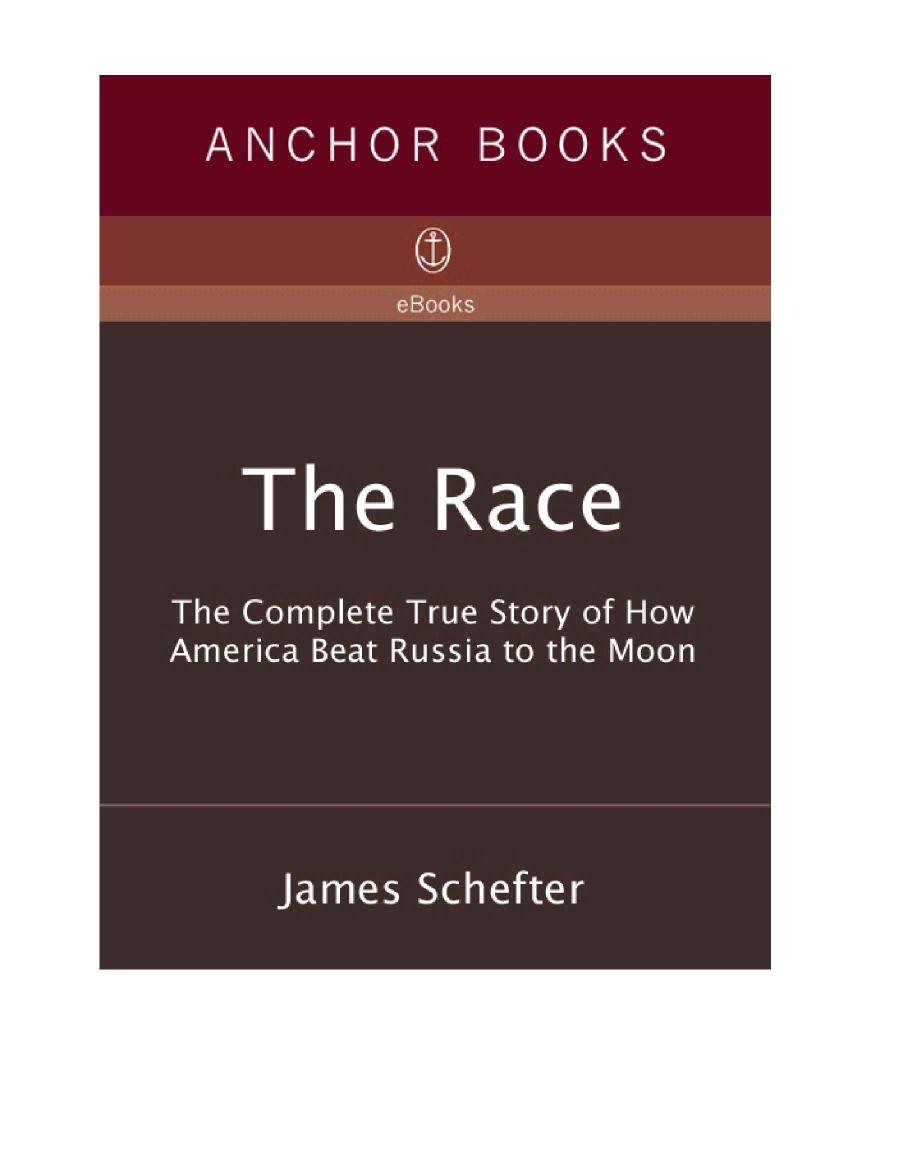The Race: The Complete True Story of How America Beat Russia to the Moon by James Schefter

Author:James Schefter [Schefter, James]
Language: eng
Format: epub, pdf
Tags: Technology & Engineering, Science, General, Astrophysics & Space Science, Aeronautics & Astronautics, History, United States, Space Flight to the Moon - History, Space Flight to the Moon, Astronautics, Space Race - History, Astronautics - United States - History, Project Apollo (U.S.) - History, Space Race
ISBN: 9780385492546
Google: IwXsOeH-n28C
Publisher: Anchor
Published: 2000-01-02T00:00:00+00:00
8
Two weeks after his momentous declaration, Jack Kennedy met Nikita Khrushchev for face-to-face talks in Vienna. Over lunch, Kennedy suggested that the two countries cooperate on a lunar program. Khrushchev said “no,” “maybe,” then after returning to Moscow, made it a definite no.
Political analysts and newspaper columnists the world over criticized the Soviet Union for its negative position. The most-asked question was “What do they have to hide?” Sergei Khrushchev asked his father about the decision during one of their frequent after-dinner walks around the Kremlin grounds.
“If we cooperate with the Americans,” the elder Khrushchev said, “it will mean opening up our rocket program to them. We have only two hundred missiles, but they think we have many more.”
Personal misunderstanding and distrust ran so deep between the United States and the Soviet Union that Khrushchev was convinced Kennedy would attack tomorrow morning if he discovered that fact. Soviet rocket force weakness was masked by the Chief Designer’s successes in space and by Nikita Khrushchev’s saber-rattling bluster. “So when they say we have something to hide …?” Sergei asked.
At that, his father laughed. “It is just the opposite. We have nothing to hide. We have nothing. And we must hide it.”
Until Jack Kennedy reached for the moon to atone for the early lapses in his administration, the space race was based on one-upmanship. Beating the other guy was national policy in both the United States and the Soviet Union. But it was like some orbital poker game. I’ll see you and raise you one. And there was always another hand. Jack Kennedy redefined the race. Now there was only one pot and its name was the moon. Winner take all.
There was only one kind of spacecraft that mattered too, and it was manned. Enormous strides were coming in satellites of all varieties—weather, communications, scientific, spy—and the technological and industrial might of the United States would take command and quickly leave the Russians far behind. In short order, America dominated outer space and Americans were first to reap the benefits. But that part of the space race went off to a dead-end siding in the public mind. The only race now was to the moon. It was a finish line everyone could see from the backyard. There was a time limit too: the end of the decade. And it had to be a man who got there and came back alive. Robots and machines didn’t count.
While the Chief Designer digested the new rules and got ready for his next mission, America went back into space. This time it was Gus Grissom on Mercury-Redstone 4, the last of the manned Redstone flights. His capsule was Liberty Bell 7, and what happened gave everyone in the Mercury program a sinking feeling. Grissom’s job was to duplicate the Shepard flight. With two successful manned flights into suborbital space, Bob Gilruth and the Space Task Group would consider declaring Mercury ready for orbit. Then they’d do a monkey flight to orbit before clearing the way for John Glenn to get his ride.
Download
The Race: The Complete True Story of How America Beat Russia to the Moon by James Schefter.pdf
This site does not store any files on its server. We only index and link to content provided by other sites. Please contact the content providers to delete copyright contents if any and email us, we'll remove relevant links or contents immediately.
| Aerodynamics | Aircraft Design & Construction |
| Astronautics & Space Flight | Avionics |
| Gas Dynamics | Propulsion Technology |
Whiskies Galore by Ian Buxton(41879)
Introduction to Aircraft Design (Cambridge Aerospace Series) by John P. Fielding(33064)
Small Unmanned Fixed-wing Aircraft Design by Andrew J. Keane Andras Sobester James P. Scanlan & András Sóbester & James P. Scanlan(32743)
Craft Beer for the Homebrewer by Michael Agnew(18140)
Turbulence by E. J. Noyes(7936)
The Complete Stick Figure Physics Tutorials by Allen Sarah(7307)
Kaplan MCAT General Chemistry Review by Kaplan(6866)
The Thirst by Nesbo Jo(6826)
Bad Blood by John Carreyrou(6552)
Modelling of Convective Heat and Mass Transfer in Rotating Flows by Igor V. Shevchuk(6391)
Learning SQL by Alan Beaulieu(6209)
Weapons of Math Destruction by Cathy O'Neil(6143)
Man-made Catastrophes and Risk Information Concealment by Dmitry Chernov & Didier Sornette(5921)
Digital Minimalism by Cal Newport;(5664)
Life 3.0: Being Human in the Age of Artificial Intelligence by Tegmark Max(5474)
iGen by Jean M. Twenge(5366)
Secrets of Antigravity Propulsion: Tesla, UFOs, and Classified Aerospace Technology by Ph.D. Paul A. Laviolette(5309)
Design of Trajectory Optimization Approach for Space Maneuver Vehicle Skip Entry Problems by Runqi Chai & Al Savvaris & Antonios Tsourdos & Senchun Chai(5011)
Pale Blue Dot by Carl Sagan(4912)
